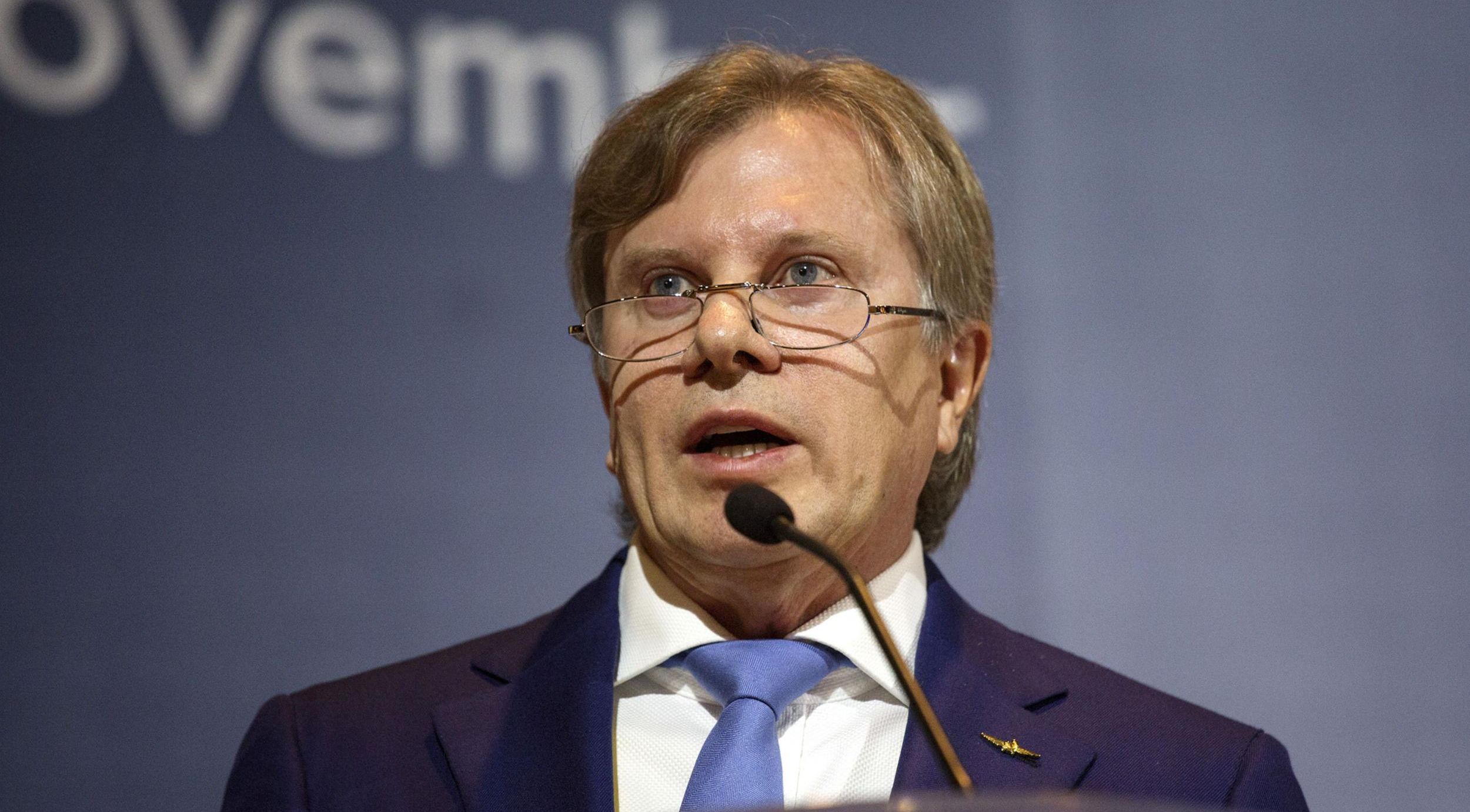Iran and Russia will prepare a general contract on the construction of Rasht-Astara railroad in Iran in the coming months, which is part of the International North-South Transportation Corridor, Russian Transport Minister Vitaly Savelyev told reporters.
"During a visit to Iran, we talked through the main terms. Now we are exchanging letters, as we agreed with the transport minister of Iran, Mehrdad Bazrpash, and will present our companies from both sides that will participate in this. We think that in the near future, a few months might be needed to draft a general, main, contract between our companies for them to start implementing this project. Money has been allocated, now we need to prepare for implementation," Savelyev said when asked if a construction contract had been signed.
He said the railroad will be built jointly, but there will be a separation.
"Construction materials that are clearly significantly cheaper in Iran, such as cement, sand and gravel, will be acquired in Iran. More complex products, the main component of the financing, will go to Russian companies. This include rails, prefabricated concrete products, locomotives, automation equipment, signaling and so on," Savelyev said, adding that "we are now quickly looking for companies from both sides that will participate in this."
Asked about the planned gauge of the track, he said the plan is to build a dual gauge line.
"We will start with 1435 gauge, but we will build a dual gauge that will make it possible to lay another rail [for 1520 gauge] if it is necessary to expand shipping volume," Savelyev said.
Earlier in May, Russia and Iran signed a cooperation agreement on financing the design, construction and provision of goods and services for the construction of the Rasht-Astara railroad. The document was signed in the presence of Iranian President Ebrahim Raisi and President Vladimir Putin, who joined the ceremony by video call.
It was also reported that Russia will provide an intergovernmental loan of €1.3 billion to build the railroad, which is expected to be built by the end of 2027. The overall cost of the project is €1.6 billion.
Entire Region to Benefit: Raisi
The North-South corridor will benefit the entire region. From East and South Asia to Caucasia and North Europe, the route is a manifestation of friendship, convergence and economic partnership among all countries long the way more than before, Raisi was quoted as saying by IRNA at the ceremony in Tehran.
He added that initial negotiations to complete the corridor dates to two decades ago and that intense diplomacy during his presidency has accelerated work on the project.
Putin stressed the importance of the agreement and said the Rasht-Astara railroad will give us an opportunity to transform and diversify global transportation routes, adding that it will create competition to boost transit capacities in the region.
According to Putin, the North-South corridor plays a palpable role in meeting the food security of Iran and littoral state of the Persian Gulf.
The rail project is a 162-kilometer railroad between the city of Rasht, the capital city of Gilan Province, and the city of Astara in the same province on the border with Azerbaijan.
With the completion of this section, trains can travel from St. Petersburg to Persian Gulf.
The Astara–Rasht–Qazvin railroad, which will wind along the southwestern corner of the Caspian Sea, forms a central link of the longer INSTC, a multimodal route linking India, Iran, Azerbaijan, Russia and Europe.
The cross-border Astara (Iran)–Astara (Azerbaijan) section of the railroad was officially inaugurated on March 29, 2018, while the Rasht–Qazvin section inside Iran was implemented on March 6, 2019. Therefore, the only remaining gap is a 164-kilometer railroad section from Rasht to Astara. Until this railroad segment is completed, freight moving by train must be transferred to trucks and then back again.
Sustainable Transit Revenue
The corridor has enormous potential to create sustainable revenues that can rival our oil exports, Mohammad Jamshidi, vice president for political affairs, said on Tuesday.
According to Deputy Roads Minister Kheirollah Khademi, after the signing of the agreement, the project will take off with €1.5 billion of Russian funding.
Echoing Jamshidi’s remarks about the project, Khademi said, “Its completion can bring in enormous revenues by increasing the volume of goods transited through Iran. The route can attract the lion’s share of the cargo transported between Russia and India or East Europe and India.”
The deputy minister referred to the passage of Rasht-Astara railroad through farms along 50% of the route as a significant hurdle in completion of the project.
“We need to purchase these farms and after that, construct bridges to preserve the nature. So far, we have designed bridges along 52 kilometers of the way,” he added.
Kazem Jalali, Iran’s ambassador to Russia, earlier said construction work is expected to begin soon.
“The project will be taken to an operational, practical level. I think that within three to four months, maximum until October, the executive part of implementing the project of the International North-South Transportation Corridor will begin," Jalali said at the Caucasus Region Investment Exhibition.
In March, Sergey Pavlov, the first deputy head of Russian Railways, also told reporters that the Russian Ministry of Transport was preparing two intergovernmental agreements: Iran-Russia and trilateral Azerbaijan-Russia-Iran.
The main obstacle in the way of the project to date has been financing, particularly due to the United States’ sanctions on Iran.
According to an earlier agreement between Iran and the Republic of Azerbaijan, both sides pledged to provide $500 million each to build the Rasht–Astara railroad. And in 2016, the International Bank of Azerbaijan signed a deal with Iran on the allocation of a $500 million loan for this purpose. However, in practice, this agreement and the loan were never implemented due to the comprehensive US sanctions on Iran’s banking network.


